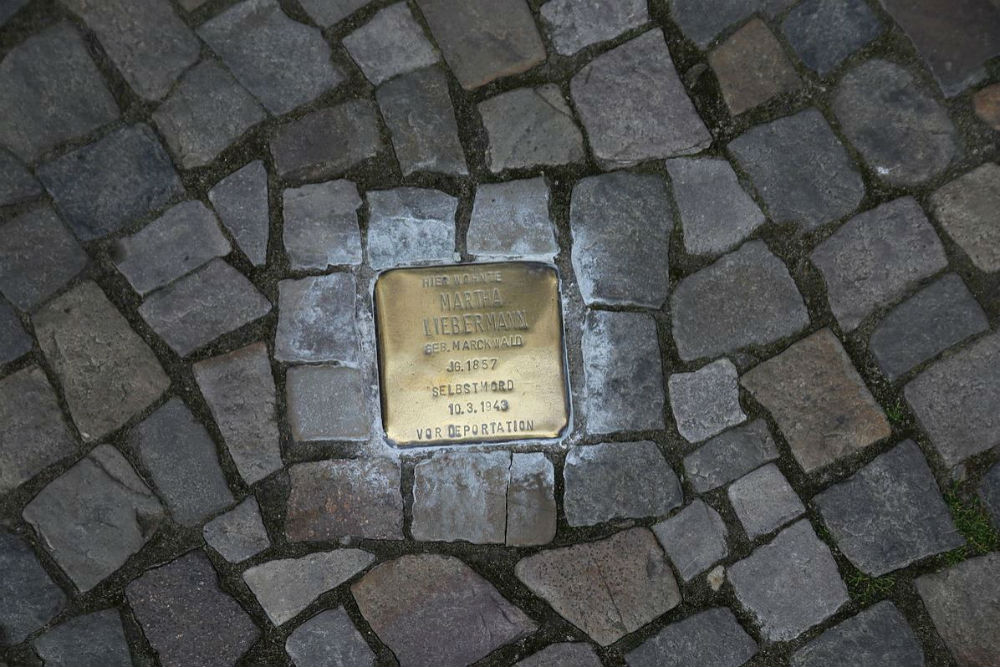Stumbling Stone Pariser Platz 7
This small, brass memorial plaque (Stolperstein or stumbling stone) commemorates:
* Martha Liebermann, née Marckwald, born 1857, suicide, 10 March 1943, before deportation.
The Marckwald and Liebermann families were closely linked since before 1843. Martha Marckwald and the Max Liebermann, a painter 10 years older than she, married in 1894. They had one child, Marianne Henriette Käthe Liebermann. During WW1, Käthe married Kurt Riezler and a granddaughter, Maria, was born. In 1918, Max Liebermann was appointed President of the Prussian Academy of Arts. The fall from the top of respected society was difficult. Before he could be removed, he resigned his leadership in 1933, then his art was banned, and he died "filled with grief" in 1935. He was 87. Next, Martha Liebermann was harrassed and assessed levies until she lost all her resources. After the November 1938 Pogromnacht, Martha’s daughter, son-in-law, and grandchild emigrated to the US. Martha was urged by family and friends to emigrate, but she did not want to leave Berlin and her husband’s grave. Finally, in 1941 she agreed but could not afford the very high fees (ransom, Lösegeld). On 5 March 1943, police arrived at her door to take her, age 85, to Theresienstadt. Instead, she took an overdose of Veronal (barbital) and died in the Jewish Hospital 5 days later.
"Stolpersteine" is an art project for Europe by Gunter Demnig to commemorate victims of National Socialism (Nazism). Stolpersteine (stumbling stones) are small, 10x10cm brass plaques placed in the pavement in front of the last voluntary residence of (mostly Jewish) victims who were murdered by the Nazis. Each plaque is engraved with the victim’s name, date of birth, and place (mostly a concentration camp) and date of death. By doing this, Gunter Demnig gives an individual memorial to each victim. One stone, one name, one person. He cites the Talmud: "A human being is forgotten only when his or her name is forgotten."
Do you have more information about this location? Inform us!
Source
- Text: Fedor de Vries & Anne Palmer
- Photos: Drrcs15
- Stolpersteine in Berlin: Martha Liebermann
- Stolpersteine.eu
Nearby
Museum
- Topography of Terror - Berlin
- German Historical Museum (Zeughaus Berlin) - Berlin
- Silent Heroes Memorial Centre - Berlin
Point of interest
Monument
- Memorial for the Sinti and Roma of Europe - Berlin
- Reichstag Memorial - Berlin
- Holocaust Memorial Berlin - Berlin
Cemetery
- Soviet War Memorial (Tiergarten) - Berlin
- German War Graves Dorotheenstädtischer Friedhof - Berlin
- Invalidenfriedhof - Berlin
Remembrance Stone
- Stumbling Stones Marienstraße 7 - Berlin-Mitte
- Stumbling Stones Marienstraße 27 - Berlin-Mitte
- Stumbling Stones Marienstraße 25 - Berlin-Mitte





